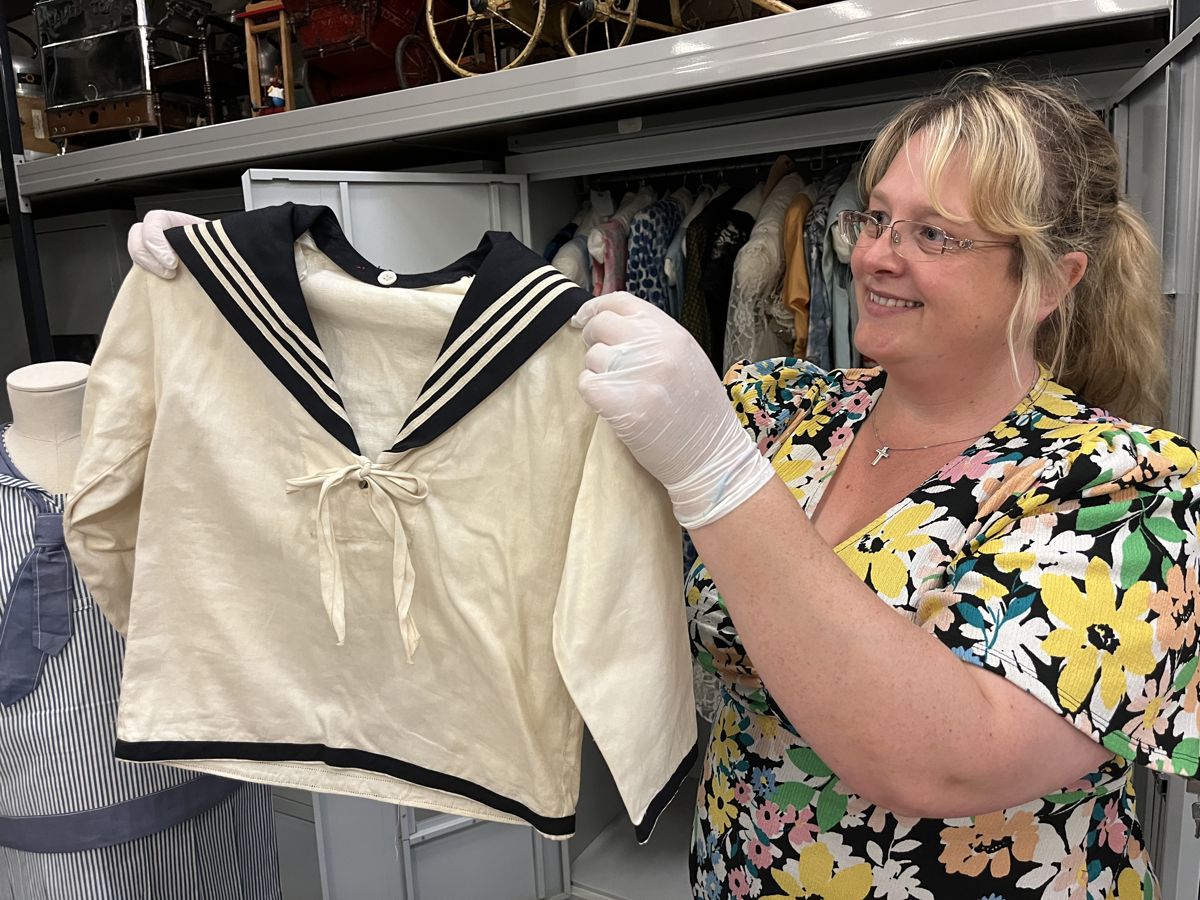Leeds Museums and Galleries showcase vintage sailor suits symbolizing a fashion trend started by Queen Victoria in 1846, reflecting the city’s textile heritage. The ‘Fabulous Fashion’ workshop explores centuries of clothing evolution, highlighting Leeds’ role in shaping historic fashion trends.
What is the historical significance of the vintage sailor suits displayed in Leeds?
The vintage sailor suits showcased by Leeds Museums and Galleries represent a pivotal fashion trend set by Queen Victoria in 1846. Originally a symbol of elite status, they became mainstream children’s wear by the early 20th century, reflecting Leeds’ rich textile heritage and the city’s role in shaping historic fashion trends.
Museums and Galleries Showcase Nautical Chic
The Leeds Discovery Centre, a treasure trove of historical artifacts, has unveiled a dashing array of vintage sailor suits that once ensured Victorian children were the epitome of style, adorned in nautical finery. This classic collection features a striking range of blue and white ensembles, comprising dresses and bellbottom trousers that took the late 19th and early 20th centuries by storm. An inherent part of Leeds’ rich textile heritage, these outfits will be a focal point in the upcoming ‘Fabulous Fashion’ workshop that delves into centuries of clothing and costume evolution.
The maritime-inspired suits, a nod to the iconic British naval uniform, became a cherished fashion choice for children during the Victorian era. It was Queen Victoria herself who set the trend by commissioning a sailor suit for Prince Albert Edward in 1846, a style so adored by Prince Albert that it warranted a commissioned painting. This pivotal moment marked the beginning of a widespread fashion trend, as affluent families sought to emulate the royal precedent.
The turn of the century saw sailor suits transition from elite wardrobes to mainstream popularity, emerging as the preferred attire for active children of both genders. Girls’ fashion was equally impacted, with sailor-style dresses becoming a hit from the 1900s through the 1920s. This cultural shift saw businesses like John Barrans of Leeds, endearingly known as the ‘little boys tailor,’ flourish by specializing in children’s clothing, including sailor suits and other playful garments like Russian-style tops and smocks.
Leeds’ Influence on Children’s Fashion
Leeds Museums and Galleries’ own Natalie Raw, curator of costume, sheds light on the significance of these sailor suits: “These garments are more than just clothes; they’re an early example of a public figure’s attire igniting a lasting fashion trend.” She points out that the allure of sailor suits persists within the British Royal Family, with young royals frequently seen donning the style at state events. Raw expresses excitement in showcasing Leeds-made outfits and their influence on style and manufacturing across the ages.
The development of children’s fashion in Leeds is a testament to the ingenuity and creativity of the city’s tailors and dressmakers. The ‘Fabulous Fashion’ workshop, scheduled for July 31st, will not only celebrate these sailor suits but will also include a variety of historic fashions. Furthermore, an expansive exhibition of children’s clothing is set to take place at Lotherton in March of the following year, offering a wider perspective on the city’s influence on children’s wear.
Councillor Salma Arif, a voice for Leeds City Council on culture, remarks on the importance of such collections: “They enable us to appreciate Leeds’ storied past in textiles and fashion, and inspire us with the creativity of those who shaped modern Leeds.” This reflection of the city’s unique narrative through clothing serves as a bridge connecting past and present creative spirits.
The Intersection of History, Culture, and Fashion
As the city of Leeds continues to embrace its historical significance in the textile industry, the Leeds Discovery Centre and Leeds Museums & Galleries remain pivotal in curating and sharing the city’s rich narrative. The ‘Fabulous Fashion’ workshop offers a free, immersive experience for those eager to understand the evolution of clothing styles and their socio-cultural impacts. It stands as an open invitation to explore the ingenuity of past Leeds’ residents who played a crucial role in fashion trends that have withstood the test of time.
With a proud and distinguished history in clothing and textiles, Leeds boasts a collection of garments that not only define historic trends but also embody the city’s spirit of innovation. The anticipation for the ‘Fabulous Fashion’ workshop and the forthcoming children’s clothing exhibition is a vivid reminder of the city’s commitment to preserving and celebrating its heritage.
For those interested in participating in the ‘Fabulous Fashion’ workshop or learning more about the intricacies of historic fashion trends, additional details and booking information can be found at the Fabulous Fashion Workshop – Leeds Museums & Gallaries. This unique opportunity to delve into Leeds’ sartorial past is not to be missed.
ENDS
- The vintage sailor suits showcased in Leeds represent a fashion trend started by Queen Victoria in 1846, reflecting the city’s textile heritage.
- The sailor suits transitioned from elite wardrobes to mainstream popularity by the early 20th century, becoming a preferred attire for active children.
- Leeds Museums and Galleries curator Natalie Raw highlights the significance of these sailor suits as an early example of a public figure igniting a lasting fashion trend.
- The ‘Fabulous Fashion’ workshop at Leeds will celebrate Leeds-made outfits and their influence on children’s fashion across the ages.
- Councillor Salma Arif emphasizes the importance of collections like these in appreciating Leeds’ storied past in textiles and fashion.
